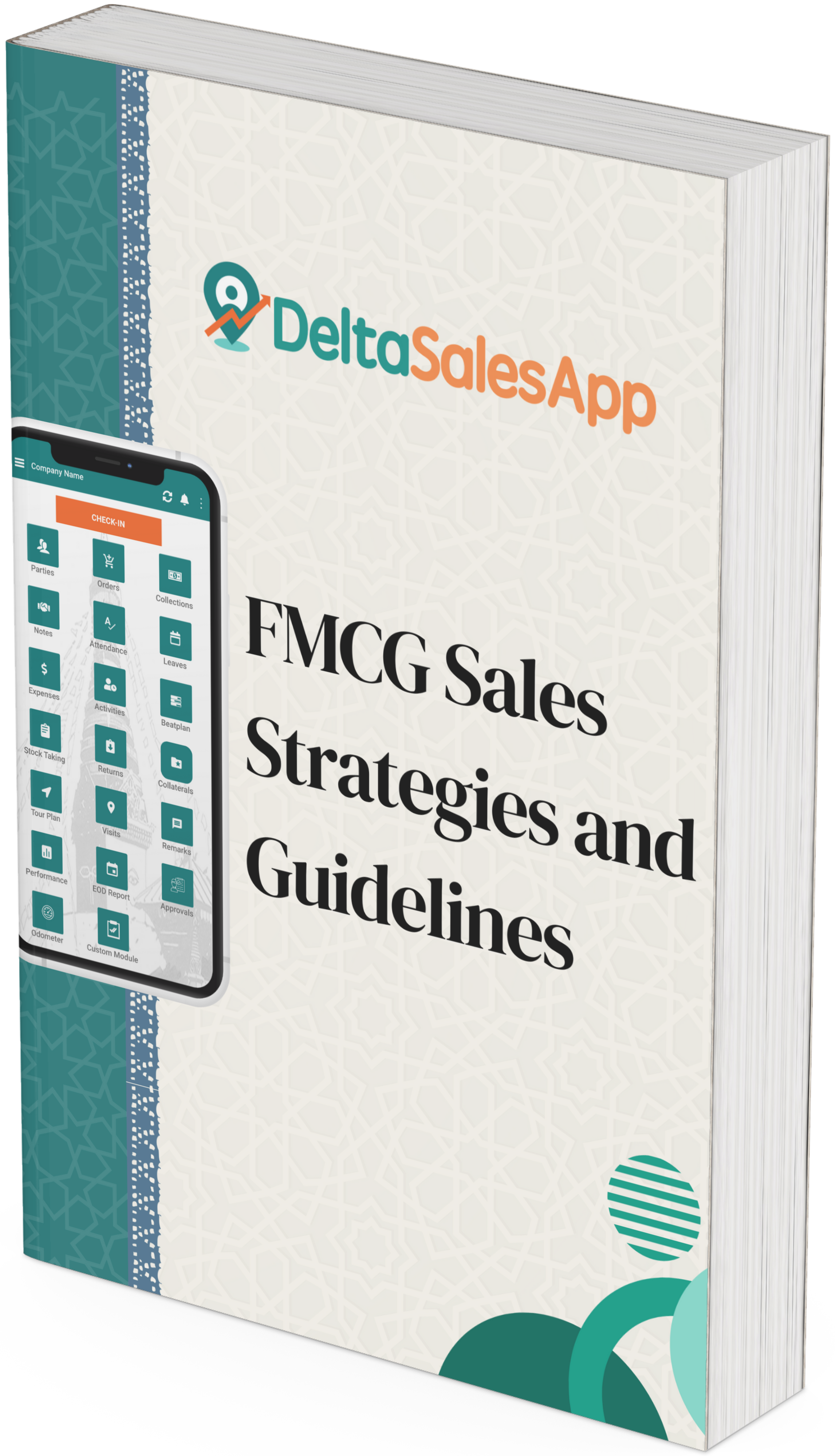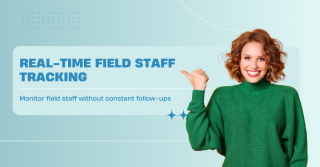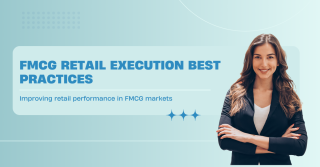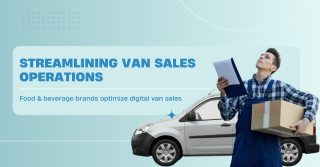Beat And Route In FMCG Sales: Optimizing Your Distribution Strategy

In the world of FMCG (Fast-Moving Consumer Goods), sales teams often rely on a critical concept called "Beat and Route" to ensure that their products reach the market effectively and efficiently. But what exactly does "Beat and Route" mean in the context of FMCG sales, and how can you use it to optimize your sales strategy?
What is Beat and Route?
In FMCG sales, Beat and Route is a method used by sales teams or distributors to manage their daily activities and plan the visits to retail outlets effectively. It involves two key components:
Beat: The "beat" refers to the specific set of outlets or retail locations that a salesperson is responsible for visiting within a set period. It’s essentially a schedule or a routine that the salesperson follows, where they visit different stores on specific days to ensure that products are in stock, visible, and well-promoted. For example, a distributor might have a "beat" that includes 10 shops in a particular area, which they need to visit once a week.
Route: The "route" refers to the actual geographical path or journey the sales team takes to cover the retail outlets. It’s the strategic route planning to ensure the salesperson or distributor optimizes time and effort while visiting stores in a logical order. For instance, instead of taking a winding path that leads to unnecessary detours, the route would be designed to visit nearby stores in a sequence that saves time and increases the number of stores covered in the day.
Together, Beat and Route are a dynamic method of planning, optimizing, and organizing sales visits, helping FMCG businesses ensure that their products are consistently available and promoted at retail outlets.
Why is Beat and Route Important in FMCG Sales?
Enhanced Market Coverage: One of the primary goals of Beat and Route planning is to increase the market coverage for FMCG brands. Since FMCG products are sold at multiple outlets (supermarkets, convenience stores, local retailers, etc.), having a strategy in place to visit these outlets regularly ensures that products are always available on shelves. Consistent visits also help in expanding brand presence in both urban and rural markets.
Product Availability: An important aspect of FMCG sales is ensuring that the product is always available in stores when customers need it. If a product isn’t on the shelf, consumers might turn to competitors. A strong Beat and Route strategy ensures that distributors make frequent visits to check stock levels, restock shelves, and eliminate the possibility of stockouts. The availability of the product drives sales and customer satisfaction.
Effective Distribution and Route Optimization: An optimized route plan allows the sales team to minimize travel time and maximize the number of stores visited in a day. By strategically planning the route, distributors and salespeople can ensure that each visit is as efficient as possible, reducing operational costs and improving the productivity of sales teams. The right routes help sales reps avoid traffic, minimize time spent between visits, and ensure they cover every store in the area.
Building Stronger Relationships with Retailers: By visiting stores consistently, salespeople can build strong relationships with retail owners, managers, and other stakeholders. These relationships are crucial for FMCG companies, as they help ensure the retailers prioritize their products. When salespeople consistently engage with store owners, they also gather feedback on customer preferences and any issues that might arise, allowing the FMCG brand to act on it quickly.
Market Insights and Real-Time Data: Regular visits to various stores and markets allow sales teams to collect market intelligence that helps them understand the competitive landscape. Retailers might provide valuable insights on consumer behavior, competitor activities, and new market trends. Sales teams can use this information to adapt marketing strategies, adjust product offerings, and improve promotional tactics. They also have the opportunity to monitor the effectiveness of their merchandising efforts, ensuring that the products are displayed as per brand guidelines.

How to Effectively Implement Beat and Route Strategy?
Segmentation and Targeting: The first step in creating an effective Beat and Route plan is market segmentation. Different stores and regions might have different sales potentials, so it’s crucial to identify which outlets are most important for the brand. Large supermarkets in urban areas might be more significant for mass-market products, while local grocery stores or small retail outlets may serve specific demographic groups or niche products. After segmentation, you can define the number of visits required, frequency, and sequence for each outlet in the region.
Technology-Driven Route Planning: With advancements in technology, businesses can now leverage mobile apps, route planning software, and GPS tools to optimize their Beat and Route planning. These tools help sales teams calculate the most efficient routes, track real-time sales data, and record insights from each visit. Using such technology ensures that salespeople spend more time selling and less time figuring out logistics. These apps can also store historical data on each store’s sales performance, which helps sales teams prioritize visits to high-performing stores.
Tracking and Monitoring Sales Team Performance: To make Beat and Route strategies successful, it’s crucial to have systems in place to track performance. Supervisors and managers should monitor the frequency of visits, the completion of the planned route, and sales results. Regularly reviewing this data can help identify areas where the sales team needs more support or guidance. It can also highlight areas where additional resources or adjustments in the route plan might be needed.
Training and Motivation: For any sales strategy to be successful, training is critical. Salespeople need to understand the significance of their visits, how to engage with retailers effectively, and how to utilize tools like mobile apps or CRM systems for data collection. Motivation is also important, as keeping the sales team motivated and aligned with the company’s goals ensures they stay committed to the Beat and Route plan.
Flexibility and Adaptability: A rigid Beat and Route plan can sometimes lead to inefficiency, especially if external factors such as weather, road conditions, or retailer needs change unexpectedly. Sales teams should be flexible and adapt the route or frequency of visits if necessary. For example, if a store has special promotions or new stock arriving, it may require additional visits, or the sales rep might need to focus on promoting specific products based on consumer demand.
Real-Life Example of Beat and Route in FMCG:
Imagine a company like Coca-Cola trying to expand its market presence in a new city. They would first identify which retailers—supermarkets, local grocery stores, and convenience stores—are most likely to sell Coca-Cola. Based on this, they will create a Beat schedule: a salesperson might be assigned 15 stores to visit in one day, with each store on a specific route that maximizes the number of stores visited in the shortest time possible.
During each visit, the salesperson will check inventory, restock shelves, ensure proper product placement (perhaps implementing a special display), and engage with the store manager to understand any challenges or opportunities. By following this plan consistently, Coca-Cola can ensure that its product is always available on shelves, which in turn drives customer loyalty and boosts sales.
Conclusion
The Beat and Route strategy in FMCG sales is a powerful tool that enables distributors and sales teams to maximize their market coverage and optimize product distribution. By planning and executing a clear, efficient beat (the sales schedule) and route (the geographical path), FMCG companies ensure their products are available, visible, and well-promoted across a variety of retail outlets. This strategy helps companies build relationships with retailers, improve product availability, and gather valuable market insights that can drive future growth.
Whether you're managing a small FMCG brand or a large multinational, implementing a strong Beat and Route strategy can lead to improved efficiency, better customer relationships, and ultimately, increased sales. By leveraging technology, tracking performance, and focusing on continuous improvement, FMCG businesses can stay ahead in the competitive retail landscape.









